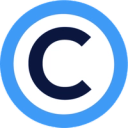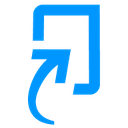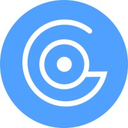The Best AI Plagiarism Checkers (in 2025)
We tested and compared dozens of AI plagiarism checkers to find the most accurate tools for detecting both copied content and AI-written text in your writing.
Checking content for originality and potential plagiarism has become increasingly complex in the age of AI-generated text and content spinning tools. What used to be a straightforward search for copied passages now requires sophisticated detection of both human plagiarism and machine-written content.
After extensively testing dozens of tools across hundreds of content samples, we've identified the most reliable AI plagiarism checkers that effectively catch both traditional copying and AI-generated text.
Quick look: The 8 best AI Plagiarism Checkers
 Winston AI Best for precise AI detectionSee Tool
Winston AI Best for precise AI detectionSee Tool Plagiarism Checker Best for checking work affordablySee Tool
Plagiarism Checker Best for checking work affordablySee Tool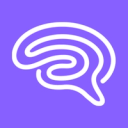 Originality AI Best for detecting AI and plagiarismSee Tool
Originality AI Best for detecting AI and plagiarismSee Tool
What makes the best AI Plagiarism Checkers?
Our detailed testing and research led us to evaluate each tool based on these key criteria:
- Accuracy: The precision in identifying both traditional plagiarism and AI-generated content matters significantly. Top tools minimize false positives while maintaining high detection rates across various writing styles.
- Coverage: Scanning capabilities must extend beyond basic web searches. Leading solutions check academic databases, publications, and previously submitted content to catch sophisticated plagiarism attempts.
- Speed: Processing time directly impacts workflow efficiency. Reliable tools complete scans quickly, even for longer documents, without compromising detection quality.
- Integration: Seamless compatibility with learning management systems, word processors, and content platforms proves essential. The best tools offer flexible APIs and plugins that streamline the checking process.
The best AI Plagiarism Checkers at a glance
| Tool | Best For | Standout Features | Pricing |
|---|---|---|---|
| Grammarly | Convenient Self-Checking | Checks writing within workflows. | Requires paid Premium subscription. |
| Smodin | Supporting Multilingual Writers | Integrated multilingual writing/checking tools. | Offers free daily use and affordable plans. |
| Winston AI | Precise AI Detection | High accuracy, low false positives | Subscription required after free trial |
| Plagiarism Checker | Checking Work Affordably | Combined AI and plagiarism scanning | Affordable plans and pay-per-use options |
| Originality AI | Detecting AI and Plagiarism | Combined AI and plagiarism detection. | Pay-as-you-go credit system. |
| Copyleaks | Ensuring Content Authenticity | Multilingual detection with low false positives. | Usage-based pricing after free trial. |
| TurnItIn | Ensuring Academic Integrity | Unmatched academic content database | Primarily institution-based enterprise pricing |
| GPTZero | Identifying AI Writing | Free, educator-focused AI detection. | Free basic use; paid educator plans. |
Best AI Plagiarism Checker for Ensuring Academic Integrity
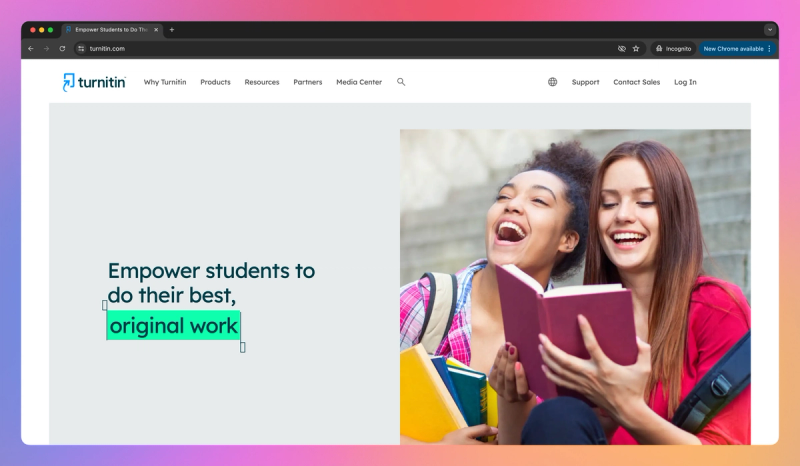
Turnitin
Turnitin is synonymous with academic plagiarism detection. As an established platform used by over 16,000 institutions worldwide, its strategic value lies in a massive database of academic papers and publications, plus sophisticated text-matching algorithms. In 2023, the platform introduced an AI-writing detection feature, positioning itself as a comprehensive tool for maintaining academic integrity when dealing with AI-generated assignments. This integration of AI detection into an already trusted plagiarism checker differentiates this solution as a one-stop system for educators seeking to uphold originality. Its long-standing reputation and enterprise support make it a go-to choice for universities enforcing strict originality policies.
Pros:
- Gold Standard Accuracy: Teachers rely on its extensive database (billions of pages, journals, student papers) to catch copy-paste plagiarism that other tools miss, providing detailed, color-coded similarity reports.
- Unified Platform: Combining robust plagiarism checking with AI writing detection saves educators time, eliminating the need for separate tools to address both traditional and AI-assisted academic dishonesty.
- Established Credibility: Its long-standing presence in academia means both faculty and students recognize Turnitin's authority, adding weight to its findings and simplifying discussions around academic integrity.
Cons:
- AI Detection False Positives: You might encounter instances where the AI detector incorrectly flags human-written text, particularly nuanced or formal writing, leading to caution among faculty and potential student anxiety.
- Limited Student Access: Students typically cannot run checks themselves before submission, relying on institutional access or third-party services, which can be frustrating for proactive self-checking.
- High Institutional Cost: The enterprise-level pricing can be prohibitive for smaller schools or departments, limiting access for institutions without significant budgets.
Best Use Cases:
- Educational Institutions: Implementing comprehensive academic integrity policies across schools and universities, leveraging rigorous plagiarism scanning and AI detection.
- Instructors and Administrators: Requiring reliable, detailed originality reports to assess student work and uphold standards, using a tool recognized as authoritative.
- Large-Scale Deployment: Integrating checks seamlessly within learning management systems (LMS) for automated scanning of all student submissions across courses or departments.
Best AI Plagiarism Checker for Detecting AI and Plagiarism
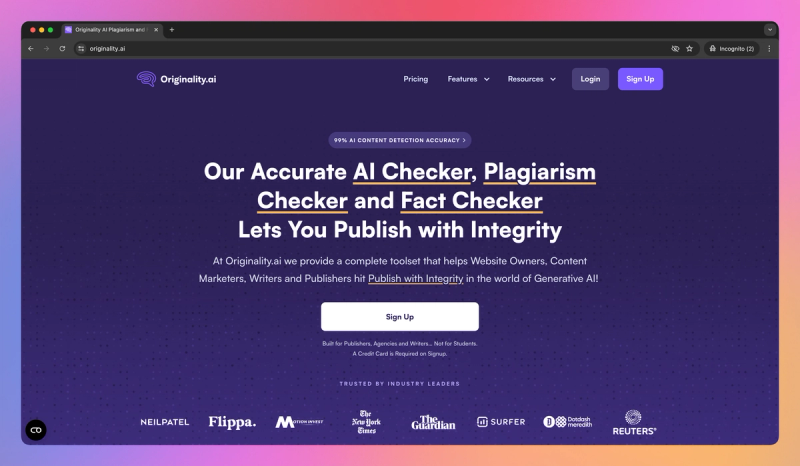
Originality AI
Originality AI is a relatively new player that has quickly become an industry-leading tool for AI content detection, especially in the content marketing and SEO world. Launched in late 2022, it carved a niche by combining two capabilities in one platform: AI-generated text detection and traditional plagiarism scanning. This dual approach provides strategic value if you are a web publisher or copywriter needing to ensure content is both original (not copied) and human-written. The tool's differentiation comes from focusing on the needs of content agencies and website owners – it’s lightweight, API-friendly, and continually updated to catch the latest AI writing tactics. It serves as a quality gatekeeper for content teams aiming to avoid search engine penalties or client rejection of AI-written material.
Pros:
- Dual Detection: Combines both AI content and plagiarism scanning in a single, efficient check, saving time and potentially cost.
- High Sensitivity: Often ranks among the most sensitive detectors, adept at identifying AI-generated text even when other tools might miss it.
- Workflow Integration: Offers API access and a Chrome extension, making it easier to integrate checks into existing content creation and publishing workflows.
Cons:
- False Positives: Can be overly sensitive, sometimes flagging human-written content as AI-generated, requiring careful interpretation of results.
- Limited Plagiarism Database: Checks plagiarism primarily against web sources, potentially missing matches from academic databases or unpublished works that tools like Turnitin might catch.
- Pay-as-You-Go Costs: While flexible, the credit-based pricing can become expensive for teams or individuals scanning large volumes of content frequently.
Best Use Cases
- Content Agencies & SEOs: Verifying the originality and human authorship of large volumes of content produced internally or by freelancers.
- Website Owners: Auditing existing site content or new submissions to ensure authenticity and avoid potential issues with search engine guidelines on AI content.
Best AI Plagiarism Checker for Ensuring Content Authenticity
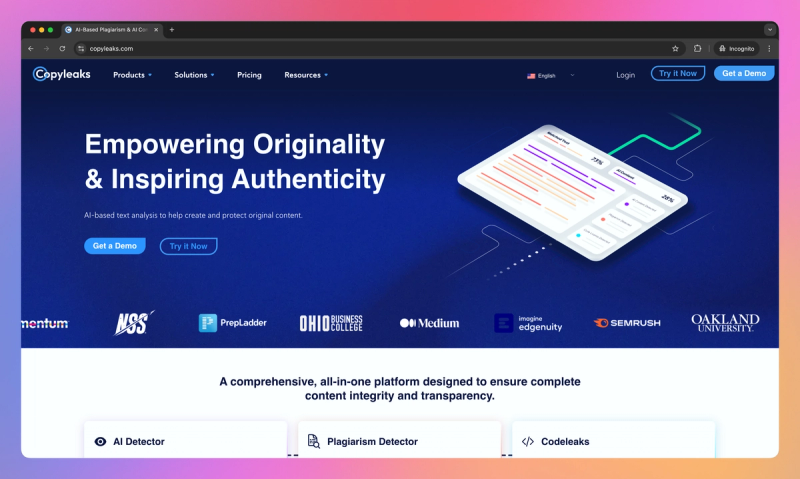
Copyleaks
Copyleaks is an established plagiarism detection platform, founded in 2015, that has effectively expanded into AI content detection, making it a robust all-around choice for ensuring content authenticity across education and corporate sectors. It built its reputation as a multilingual plagiarism checker before introducing AI detection in 2023, positioning itself with an enterprise-grade approach offering strong APIs, integrations, and a high degree of accuracy noted by third-party evaluators. This platform serves as a reliable tool for publishers and a direct competitor to Turnitin for institutions seeking comprehensive content verification.
Pros:
- High Accuracy: Delivers reliable results in both plagiarism and AI detection, performing well even on longer texts according to tests and user feedback.
- Efficient Processing: Handles bulk file uploads and large documents effectively, saving significant time when processing batches of content.
- Versatile Integration: Offers a developer-friendly API and integrations for LMS, CMS, and office suites, allowing seamless incorporation into various workflows.
Cons:
- Interface Complexity: The interface, while powerful, can feel less intuitive initially and may present a learning curve compared to simpler tools.
- Cost Factor: As a premium service with usage-based pricing following a trial, the cost can be a barrier for individuals or smaller organizations.
- Potential False Flags: Sophisticated human writing, particularly using complex vocabulary, might occasionally be flagged as AI-generated, requiring careful review.
Best Use Cases:
- Enterprises & Publishers: Ideal for organizations needing a scalable solution to screen large volumes of content for both plagiarism and AI authorship before publication.
- Educational Institutions: Serves as a capable Turnitin alternative for colleges, universities, and e-learning providers requiring robust checking, especially with multilingual needs.
- Content Platforms: Suitable for online platforms or marketplaces that need to automatically verify the originality of user-generated content or freelance submissions.
Best AI Plagiarism Checker for Identifying AI Writing
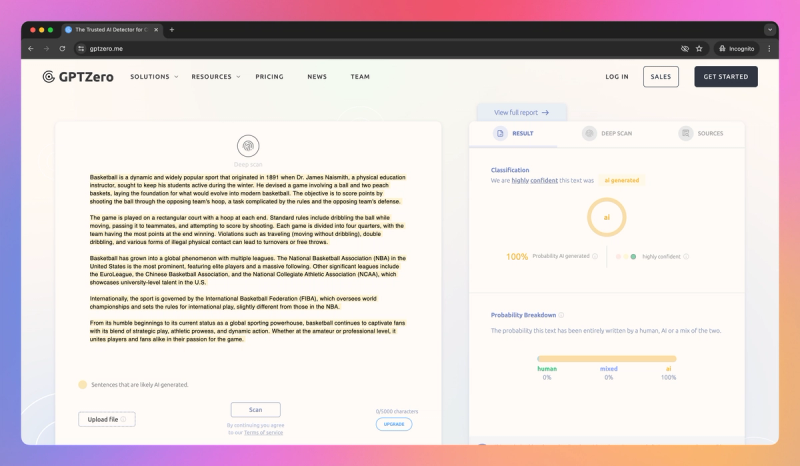
GPTZero
GPTZero rapidly gained attention in early 2023 as one of the pioneering free tools designed to identify AI-generated text, particularly in response to the rise of ChatGPT. Initially developed by a Princeton student, it became a go-to resource for educators concerned about AI use in essays. Its core value proposition rests on accessibility and a sharp focus; it offers an easy way to flag potential AI writing by analyzing text patterns. Over the past year, this tool has matured from a viral prototype into a more structured platform, securing funding and launching GPTZeroX, an enhanced version tailored for educational settings with features like class management, solidifying its position as a widely recognized tool for checking AI text in schools.
Pros:
- Accessibility and Familiarity: Its free basic access and straightforward interface led to rapid, widespread adoption, meaning many educators are already familiar with using it for quick checks without needing institutional licenses or complex setup.
- Helpful Detection Insights: The initial metrics used (perplexity and burstiness) helped spark useful conversations about the characteristics of AI writing, providing some transparency into the detection process.
- Practical Features: The platform supports uploading files (like PDFs and Word documents) and batch processing through its educator-focused version, making it more practical for reviewing multiple assignments compared to simple text-box checkers.
Cons:
- Accuracy Concerns: You might encounter significant issues with false positives, where well-written human text, especially formal or technical prose, gets incorrectly flagged as AI-generated.
- Inconsistent Results: The same text might yield different detection scores at different times, potentially due to model updates or minor text edits, making reliability a concern.
- Narrow Focus: This tool is purely an AI detector and does not check for traditional plagiarism against web sources or databases, meaning you'll need a separate tool for comprehensive originality checks.
Best Use Cases:
- Educators: Teachers, professors, and administrators can use it for a quick initial assessment of student work to gauge the likelihood of AI assistance, often as a starting point for further investigation.
- Preliminary Checks: Journalists, editors, or even students can run text through it as a fast, free check to see if content might raise AI-detection flags before submitting or publishing.
- Student Self-Checks: Students sometimes use it proactively to see if their own writing might be inadvertently flagged by AI detectors, allowing them to adjust their style if necessary.
Best AI Plagiarism Checker for Precise AI Detection
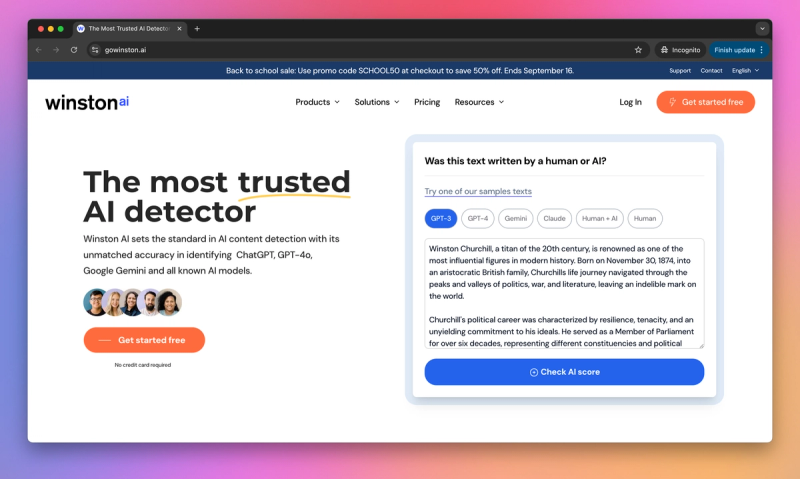
Winston AI
Winston AI is a newer entrant in the AI content detection field that has quickly gained a reputation for high accuracy and user-friendly design. Marketed towards educators, publishers, and businesses, it focuses on identifying AI-written content with precision while aiming to minimize false positives compared to some competitors. This balanced approach is delivered via a polished, cloud-based tool that's easy to use in professional settings, reflected in reviews ranking it among the top AI detectors available.
Pros:
- Accuracy & Reliability: You'll find it often correctly identifies AI-generated text while being less likely to incorrectly flag human writing, offering a dependable analysis.
- User-Friendly Reporting: The platform provides clear, professional-looking reports with sentence highlighting and overall scores, which are easy to interpret and export for documentation or sharing.
- Handles Various Texts: It performs well across different types of content (academic, business, casual) and supports multiple languages beyond English.
Cons:
- Subscription Required: Access typically requires a paid plan after a limited free trial, which might be a barrier for individual users or those with tight budgets.
- AI Detection Only: It specializes solely in identifying AI-generated content and does not include a traditional plagiarism checker to find copied text from sources.
- Newer Tool: As a more recent arrival, some larger institutions might hesitate until it gains longer-term validation compared to established players.
Best Use Cases:
- Professional Content Vetting: Ideal for editors, content agencies, and publishing houses needing to audit articles for AI-generated sections to ensure originality and human tone.
- Academic Integrity Checks: Suitable for educators and academic reviewers who require a dependable tool to check student papers or submissions specifically for AI authorship, potentially alongside a traditional plagiarism checker.
- Business Communications: Useful for verifying that important company documents, reports, or communications are human-written or for reviewing AI-assisted content for quality and appropriateness.
Best AI Plagiarism Checker for Checking Work Affordably
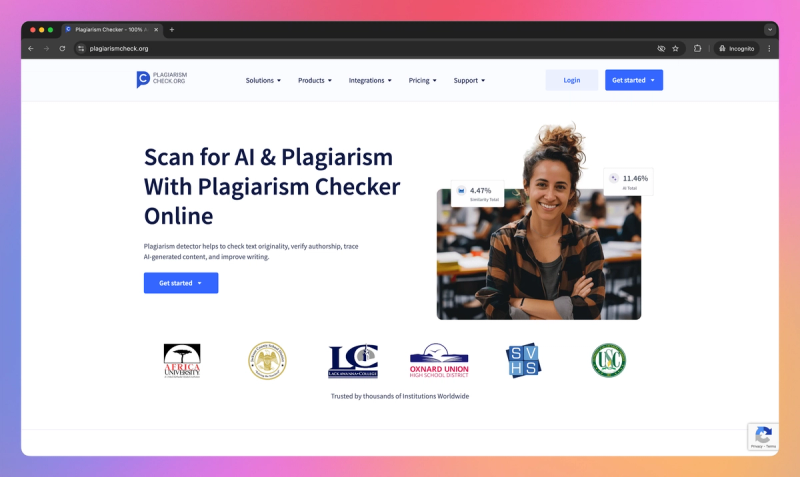
Plagiarism Checker
Plagiarism Checker combines plagiarism detection and AI-generated text identification in an affordable, user-friendly platform. It serves as an accessible Turnitin alternative, offering straightforward document checking against internet sources and publications while maintaining strict privacy standards. The tool includes multilingual support, bulk checking capabilities, and detailed analytics, making it suitable for both individual and institutional use.
Pros:
- Dual Detection: Combines plagiarism and AI text checking in one integrated tool
- User-Friendly Interface: Simple signup and intuitive document checking process
- Flexible Pricing: Pay-per-use options and affordable plans for various needs
Cons:
- Limited Database: Comparison database lacks some academic and proprietary sources
- Developing AI Detection: Newer AI checking features still building reliability
- Processing Speed: Can be slower with large documents or bulk uploads
Best Use Cases:
- Academic Integrity: Perfect for teachers and students needing affordable plagiarism checks
- Content Creation: Helps writers and editors verify original content
- Research Validation: Useful for researchers checking document authenticity
Best AI Plagiarism Checker for Convenient Self-Checking
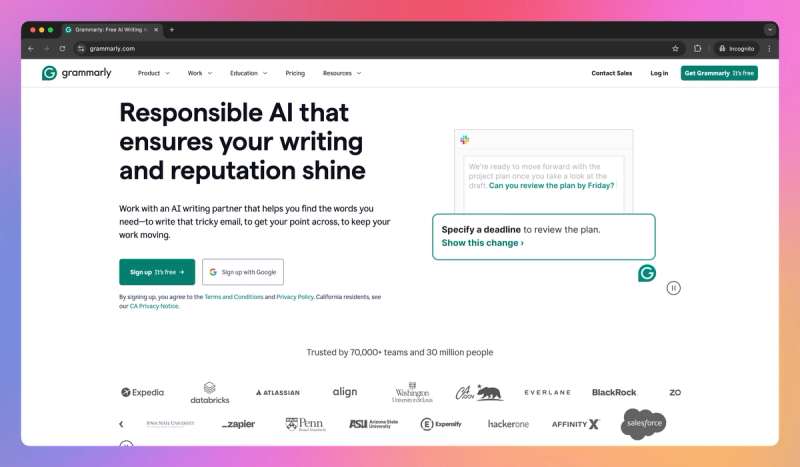
Grammarly
Grammarly is a ubiquitous writing assistant known for grammar and style checking, but it also includes a plagiarism checker as part of its premium subscription. While not a dedicated “AI plagiarism” detector like some others on this list, its massive user base and integration into writing workflows make it a noteworthy tool for originality checking. The plagiarism feature scans text against billions of web pages and academic databases to flag any duplicate content, addressing traditional plagiarism. Strategically, this tool's value is that it combines real-time writing help (grammar, clarity, tone suggestions) with a plagiarism check, allowing you to improve your work and ensure originality in one place. For those already using it to polish writing, the plagiarism checker is a convenient add-on to double-check that nothing inadvertently copies existing sources.
Pros:
- Convenience & Integration: You can check for plagiarism directly within your writing tool (like Word or Google Docs) without interrupting your workflow, thanks to its seamless add-ins and extensions.
- Holistic Improvement: It bundles top-tier grammar and style suggestions with plagiarism checks, helping you ensure writing is both polished and original in one step.
- User Trust & Privacy: As a widely trusted brand, its results feel reliable for personal use, and it respects your privacy by not storing checked papers in a public database where they could be flagged as self-plagiarism later.
Cons:
- Premium Cost: Access to the plagiarism checker requires a paid Premium subscription, which might be a barrier if you only need plagiarism checks occasionally.
- Database Limitations: While extensive, its database may not catch plagiarism from certain sources like institutional student paper repositories or obscure publications that a tool like Turnitin might find.
- No AI Detection: It currently lacks the ability to identify AI-generated content; if text is machine-written but original, Grammarly won't flag it.
- Occasional False Alarms: It can sometimes flag common phrases or properly quoted text, requiring you to manually verify if a match is truly problematic or just an innocuous similarity.
Best Use Cases
- Students performing self-checks on essays for both grammar and accidental plagiarism before submission.
- Professionals drafting reports or business documents who want a quick originality verification alongside writing improvements.
- Content writers and bloggers ensuring their work is original for clients or publication while simultaneously polishing the text.
Best AI Plagiarism Checker for Supporting Multilingual Writers
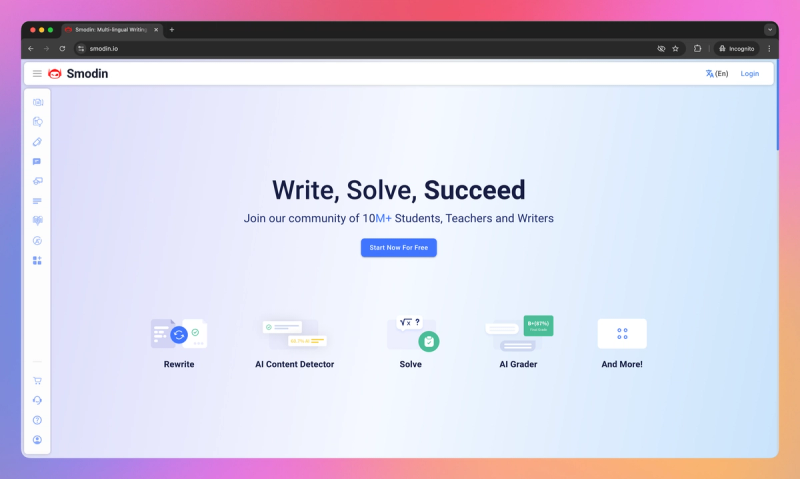
Smodin
Smodin is a multifaceted AI writing assistant and content analysis platform popular among students and content creators. It provides a suite of tools, including text generation, rewriting, plagiarism checking, and AI content detection, making it a versatile one-stop-shop for generating or refining text while checking originality. With generous free usage tiers and support for many languages, it offers accessibility for those needing to switch between creating content with AI and verifying that the output appears human and original. This platform effectively provides tools for both creation and verification.
Pros:
- All-in-One Platform: Combining AI writing, rewriting, plagiarism checking, and AI detection in one place is highly convenient, especially with generous free access tiers making advanced tools accessible.
- Extensive Language Support: Its ability to handle plagiarism and AI detection in over 50 languages makes it incredibly useful for international students and writers working outside of English.
- Simple Interface: The platform is straightforward to use; you can quickly copy-paste text, get results, and move between the various tools without a steep learning curve.
Cons:
- Depth vs Breadth: While versatile, the plagiarism checker might miss subtle matches or non-public sources compared to specialized tools like Turnitin, and the AI detector isn't foolproof.
- Potential for Misuse: The integrated rewriter, while useful for some tasks, can easily facilitate academic dishonesty by spinning content to bypass basic plagiarism checks.
- Usage Limits: The free daily limits can be quickly reached during heavy use, potentially interrupting your workflow right when you need the tool most and pushing towards paid plans.
Best Use Cases:
- Students and Writers on a Budget: It's a go-to for individuals needing writing assistance and originality checks (both plagiarism and AI) without paying for multiple premium subscriptions.
- Multilingual Projects: If you're working with content in languages other than English, its robust multilingual support for checking is a significant advantage over many competitors.
- Rapid Self-Evaluation: Ideal for quickly checking drafts for obvious plagiarism or getting a sense of how AI detectors might perceive your text before final submission.
Conclusion
Modern plagiarism checkers have evolved beyond simple copy-paste detection to address the complexities of AI-generated content. Today's tools offer specialized solutions for different needs - from Turnitin's academic focus to Originality AI's content marketing capabilities. By combining traditional plagiarism scanning with AI detection, these platforms help maintain content authenticity across education and business.


